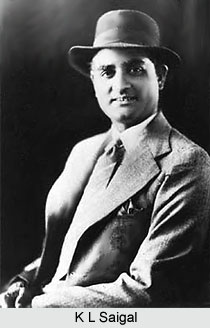 Agra Gharana enjoys great repute in the various contemporary gharanas of today. A gharana is formed when a characteristic mode of music is preserved and groomed in a particular family, becoming a tradition. The Agra gharana absorbed attractive features from other gharanas and yet retained its own inherent characteristics. It must be remarked here that this particular gharana pertains to vocal music only, and has no counterpart in instrumental music, and that it has had a distinct style in Dhrupad, Dhamar and Khayal. It would be difficult to say whether all the singers of this gharana could well command all the three forms or they confined themselves to any one or two of these. There are a number of well known gharanas which have evolved within the field of the Agra gharana. One of the most well known and in fact the first among many is the gharana of Haji Sujan Khan. Many well known maestros followed Sujan Khan, all of whom contributed immensely in keeping alive the tradition of the Agra Gharana. Shyamarang and Sarasrang were two great exponents of this style. They were excellent in their art and Natthan Khan and Pirbakhsh of Gwalior learnt many dhrupad-dhamar from them.
Agra Gharana enjoys great repute in the various contemporary gharanas of today. A gharana is formed when a characteristic mode of music is preserved and groomed in a particular family, becoming a tradition. The Agra gharana absorbed attractive features from other gharanas and yet retained its own inherent characteristics. It must be remarked here that this particular gharana pertains to vocal music only, and has no counterpart in instrumental music, and that it has had a distinct style in Dhrupad, Dhamar and Khayal. It would be difficult to say whether all the singers of this gharana could well command all the three forms or they confined themselves to any one or two of these. There are a number of well known gharanas which have evolved within the field of the Agra gharana. One of the most well known and in fact the first among many is the gharana of Haji Sujan Khan. Many well known maestros followed Sujan Khan, all of whom contributed immensely in keeping alive the tradition of the Agra Gharana. Shyamarang and Sarasrang were two great exponents of this style. They were excellent in their art and Natthan Khan and Pirbakhsh of Gwalior learnt many dhrupad-dhamar from them.Feautres of Agra Gharana
As a khayal gharana,the Agra gharana took shape during the course of the 19th century, through the grand-disciples and descendants of Shyamrang. Of all the known khayal styles, it is the Agra singers who proudly parade their dhrupadic roots and influences most in their renditions. There are some rather outstanding features of this gayaki most of which are typical to the Agra gharana. The gharana adopts a kind of voice production which relies on a flatter version of the vowel sound "a"', which makes its music agreeable to rhythmic variations and is best suited for a deep masculine voice. Emphasis is laid on bold, full-throated and robust voice production, and singing in the lower register (mandra) is favoured. Keeping in tune with its dhrupadic origins, the singers use broad and powerful ornamentations (gamaks), extensive glides (meends), and resonant articulations of notes. As with the Gwalior gharana, the Agra singers accentuate the importance of the bandish and its methodical exposition. Singers following Faiyaz Khan's style resort to the dhrupadic nom tom alaap before singing the bandish. The singers of this gharana are also great masters over laya-kari or the rhythmic component. In fact, laya-kari is the lasting foundation on which the singers build the edifice of the bandish. In the hands of the best exponents, the dialogue between the singer and the tabla player often turns a dramatic event. Their tihais are eagerly awaited, as are their nifty ways of arriving at the same, by building up anticipation within the listener.
For more, visit the link below: